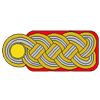
Hosted by Darren Baker
Adding stowage to a AFV

PanzerKarl

Joined: April 20, 2004
KitMaker: 2,439 posts
Armorama: 1,980 posts

Posted: Friday, July 23, 2004 - 04:20 AM UTC
Coming to the end of my firefly,just need to add some stowage on the turret.i dont just want to glue them on so is there a better way to attach them on the turret.they are some sort of rolled up blankets,i think they are called tarpaulins,any help please cheers 

ShermiesRule

Joined: December 11, 2003
KitMaker: 5,409 posts
Armorama: 3,777 posts

Posted: Friday, July 23, 2004 - 06:22 AM UTC
Many times crews will weld a rail along the top of the turret sides so that they can tie and hang things from it. I generally cut a small paperclip and shape it to fit. Then you add your stuff to the rail by adding straps to the tarps and packs around the rails
Posted: Friday, July 23, 2004 - 10:56 AM UTC
Quoted Text
.i dont just want to glue them on so is there a better way to attach them on the turret.
First of all, the real thing would have to have a place to be tied to the tank, so any stowage you add has to have that as well. If you want to add stuff where no tie downs are present then you have a small problem. Take a look at some photos and see where extra tie downs or rails were added. Install any rails or tiedowns you feel are appropriate and then paint the model. Add the stowage after the painting (once you get a bit better you'll probably add some before painting and some after. Experience is the key here).
If you are adding tarps, camo nets, bedrolls or any other soft stowage make very sure that the item fits very smoothly to the surface where you are attaching it. I never use plastic or resin stowage because it almost never sits right. Before the model is painted I make my own from either tissue soaked in white glue or epoxy putty. While it is still wet, gently press the stowage to the surface to ensure it sits exactly where you want it and looks very natural. Let it dry there and gently pry it away when dry.
One key incredient for more realistic soft stowage is how the ropes or straps interact with the item. Anything used to attach something to another will leave marks and creases where the tension in the strap deforms the item's surface. Use the same thread or straps you will eventually use to finish the stowage to crease the item while it dries. If you can remove the thread later, good. If not, paint it in place.
Once the item has set up and the vehicle is painted and decalled I then paint the stowage. Use variations of the "official" colours as every item will have a slightly different shade after exposure to the outdoors. Once the stowage paint has dried glue it in the previous place and then "attach" it using thread, monofilament or lead foil straps. If using straps don't forget PE buckles, they really add a lot to the scale look of the vehicle.
Once the straps are dry paint them and then start to weather the entire vehicle. Make sure the stowage looks like it has seen the same dusty road as the rest of the tank. Mind how splashes would be affected by the presence of the stowage. Think what would happen to the vehicle and the stowage on the vehicle as the tank went through its service life. Some things would leave scratches as they swayed at the end of a rope, some would stay in place long enough to look like part of the tank. Some are removed every night and so their dust is seldom more than a day old.
Hard stowage (crates, Jerrry cans and the like) are much easier. They never sit tight to the surface so can be used from accessory sets if you like. Tie or strap them down like the soft stuff, but make sure you are not placing some of the basic stowage items in the wrong place. Tool holders and Jerrycan racks were welded in place. Moving them would require the fitters to torch off the mountings and reweld them elsewhere. This rare event would need photographic evidence to be taken seriously, so look at the photos and put things where they are supposed to go.
Make sure blankets and tarps are not located too near exhaust pipes and mufflers. Same thing with ammo and gas cans. Put weapons and water within easy reach of those who might need it.
The key thing is to think. Think what the item is, who would use it, what it might foul if the turret turned, how often it is taken off the tank, how well it is used, etc. As you answer these questions what to do with the stowage will become easier and easier.
HTH
Paul
 |











